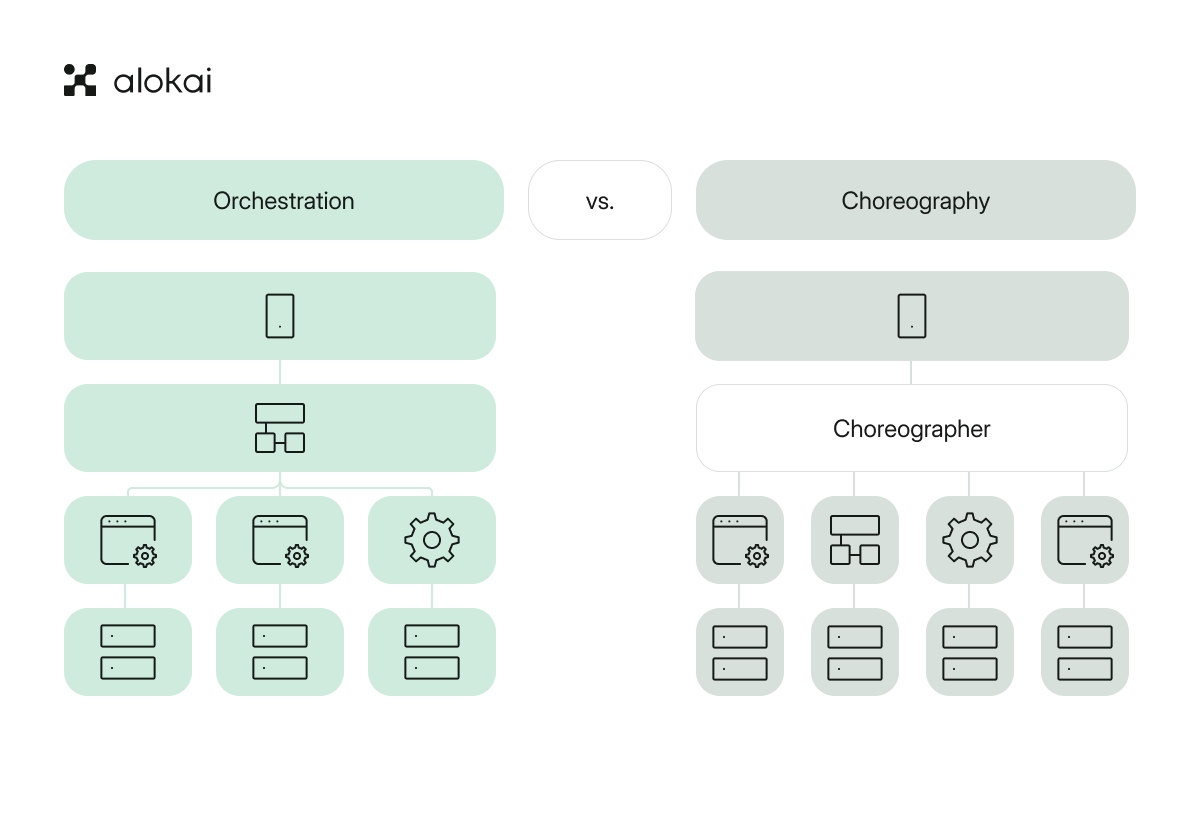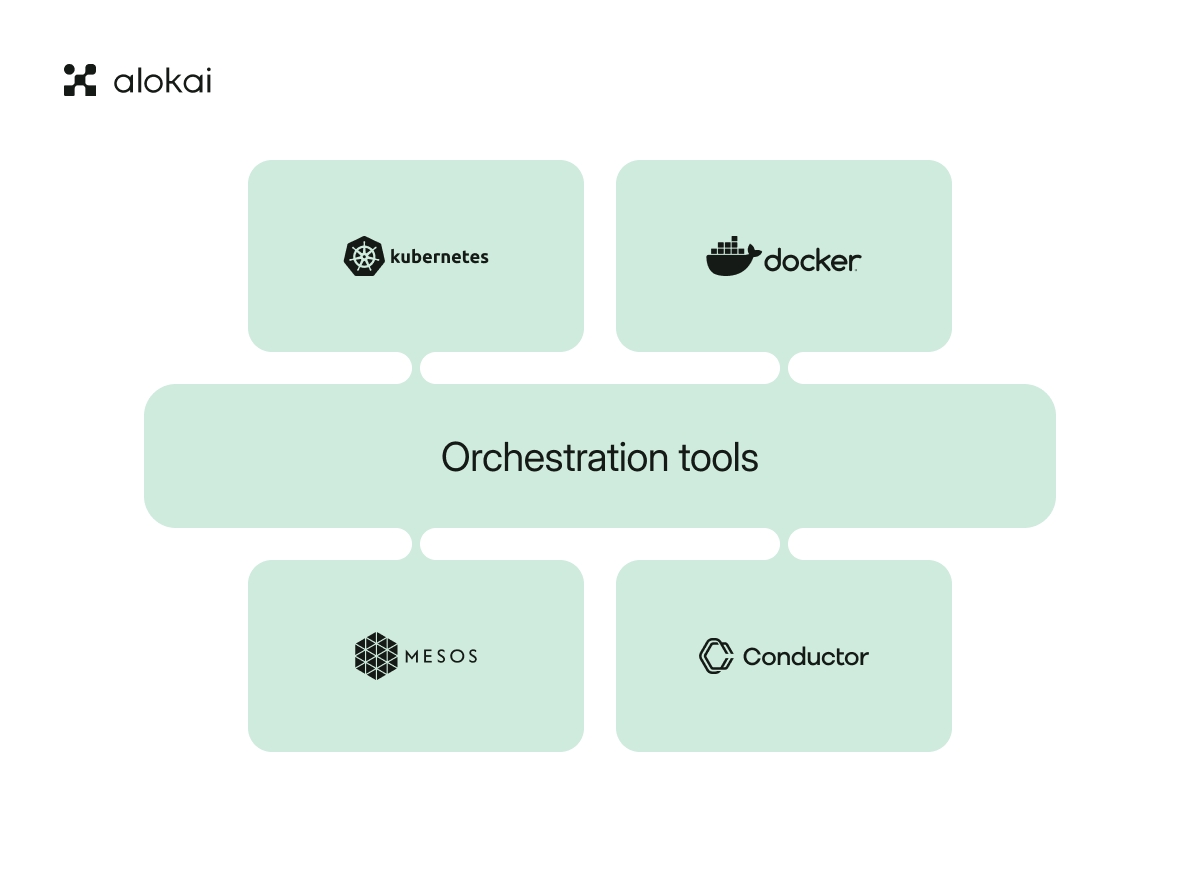Orchestrating microservices effectively is crucial for building resilient software architectures. This article uncovers the key to successful microservices orchestration, introducing tools and strategies for synchronizing microservices to operate at peak performance.
Key takeaways
Microservice orchestration is essential for managing a distributed system. It ensures that individual services coordinate like a well-conducted orchestra to execute complex tasks efficiently and without causing system-wide failures.
Loosely coupled services with well-defined APIs are central to building a resilient microservice architecture. They enable services to communicate and interact without dependency entanglements that could lead to cascading issues.
Secure, efficient microservice orchestration requires using tools like Kubernetes, adhering to architectural best practices, implementing strong security measures, and considering robust scaling and monitoring strategies to maintain system health and performance.
Understanding microservice orchestration

Microservice orchestration is a critical business process similar to the role of a conductor in an orchestra. Multiple services within a distributed system must coordinate to perform complex tasks efficiently and reliably. The challenges of managing these multiple services and maintaining a smooth process flow are not to be underestimated, as potential cascading failures can lead to dreaded downtime, impacting customer experiences and business operations.
However, when microservice orchestration hits the right notes, it solves these challenges, ensuring your system dances to the demanding rhythm without missing a beat.
https://alokai.com/blog/microservices
The role of the orchestrator in managing services
The orchestrator’s role in microservice architecture cannot be overstated; the central brain ensures every individual microservice executes its part flawlessly, in sync with others. Think of it as a conductor, with each microservice responding to the baton’s guide, allowing for a synchronized and adaptive performance to the composition’s needs.
Orchestration tools, like Kubernetes, provide this coordination, ensuring that each service harmonizes to create a system that’s not just functional but also resilient and highly available. By managing inter-service communication and tracking status and progress, the orchestrator elevates the system’s ability to perform complex business processes without missing a beat.
Key features of an orchestration layers
Key features of an orchestration layer, such as an API gateway, play a pivotal role in managing the influx and egress of data, routing requests, and ensuring that the load is well-balanced across the network of services. Robust user authentication features are the gatekeepers, safeguarding your microservices from unauthorized access.
And when it comes to service requests, orchestrators are adept at queuing tasks and delegating them to the correct service, consolidating data to deliver swift and accurate responses to client queries.
Architectural style: loosely coupled services
The architectural style of loosely coupled services is the cornerstone of a resilient microservice architecture. The fabric allows for the expansion and adaptation of services without causing a domino effect of issues across the system. By adhering to well-defined APIs and employing event-driven architectures, services can interact without becoming entangled, maintaining their independence and ensuring that a hiccup in one doesn’t spell disaster for the whole.
This independence is achieved through APIs and protocols that enable individual microservices to communicate seamlessly within the distributed system, embodying the essence of a loosely coupled system.
Orchestration vs. choreography: A comparison

In the dance of microservices, orchestration, and choreography present two distinct styles. Choreography resembles an ant colony, where each service broadcasts state changes, creating a self-organizing system that’s more than the sum of its parts. It shines in scenarios where services operate with high independence, making it a fitting strategy for systems transitioning from monolithic to microservice architectures. However, the decentralized nature of choreographed systems can obscure the clarity of system control flow, making it a complex puzzle.
What is a Monolithic Application?
Orchestration, on the other hand, takes a centralized approach with a dedicated service steering the flow of messages. This simplifies the architecture’s manageability and makes it easier to maintain and debug, especially in greenfield applications. Yet, choreography’s complexity in debugging and understanding operations should not be overlooked, as it can complicate system maintenance.
Read more about the difference between monolithic vs microservices.
Elastic Container Service (ECS) and microservice orchestration
Amazon’s Elastic Container Service (ECS) is a noteworthy ally in microservice orchestration, offering a container orchestration service that eliminates the need for separate orchestration software on the Amazon Web Services (AWS) platform. With Amazon Elastic Container Service, ECS’s flexible deployment options allow it to seamlessly integrate with various AWS services, positioning it as a crucial tool for those who operate within the AWS ecosystem.
It also enables developers to bolster the deployment, scaling, and management of microservices, providing dedicated features to enhance scalability and ensure high availability for containerized applications.
Orchestration tools: Driving efficiency in deployment
Orchestration tools such as Kubernetes, Docker Swarm, and Apache Mesos act as the maestros of microservices, harmonizing their performance to ensure a symphony of reliable and scalable applications. Kubernetes automates the deployment and scaling of containers across clusters, offering a robust open-source solution for managing containerized applications. Apache Mesos stands out because it manages containerized and non-containerized workloads, offering a unique approach to distributed computing environment management.
Netflix Conductor and Docker Swarm add to the repertoire with their fault tolerance and workflow management capabilities. At the same time, these tools collectively ensure automated deployment and management, consistently maintaining the desired state as envisioned by developers. Azure Kubernetes Service (AKS) simplifies the Kubernetes experience further, managing the complexities of the cluster infrastructure through a managed service offering. And for those handling diverse workloads, including big data applications, Apache Mesos is recognized for its resource isolation and optimization in distributed environments.

Container orchestration: Optimizing resource utilization
The art of container orchestration is in managing the lifecycle of containers to ensure they are efficiently deployed, scaled, and managed. Tools like Kubernetes and Docker Swarm are at the forefront, handling everything from updates and reconfigurations to seamlessly replacing failed containers. Kubernetes is lauded for its self-healing capabilities, scalability, and built-in service discovery, which are configured using declarative YAML files.
Using containers brings portability and isolation to individual services, facilitating scaling and optimizing resource usage.
Service discovery mechanisms
Navigating the labyrinth of microservices requires a reliable compass, and that’s where service discovery mechanisms come into play. Orchestration tools are instrumental in enabling containers to find and communicate with each other, maintaining high availability across the infrastructure. Autonomous service discovery tools manage the tracking of active services, enabling them to communicate without embedding complex logic within the services themselves. Some popular service discovery mechanisms include:
Consul
etcd
ZooKeeper
Eureka
These tools provide a centralized registry of services and their locations, making it easier for microservices to discover and communicate with each other.
Further extending these capabilities, service meshes like Istio or Linkerd offer more than just service discovery—they provide load balancing and analytics to inform effective scaling decisions. Service discovery is not just a convenience but a critical component that enables microservices to locate and communicate within a vast network, ensuring immediate response and seamless integration.
Designing microservices for successful orchestration
Designing microservices that play well with orchestration tools involves several key principles:
Adhering to the Single Responsibility Principle ensures each microservice has a clear, focused purpose, which is crucial for effective orchestration.
Building in fault tolerance with techniques like circuit breakers, retries, and redundancy means that even if parts of the system fail, the overall performance can continue without missing a beat.
Embracing asynchronous communication patterns like publish-subscribe enhances microservices' independence and reduces the risk of a single point of failure.
By following these principles and utilizing appropriate programming languages, you can effectively communicate and create multiple microservices well-suited for orchestration and perform reliably in various environments.
Dedicated data stores for each service allow for scalability and independent operation, free from shared data-management issues. Moreover, designing stateless services, where appropriate, simplifies scaling as any service instance can handle requests, leading to better resource utilization and streamlined operations.
Real-world applications: Netflix Conductor and beyond
Netflix’s Conductor is a testament to the power of microservice orchestration. It orchestrates millions of process flows to handle complex business processes at scale. Its robustness, proven through extensive real-world use at Netflix, showcases the potential of orchestrating microservices to manage intricate workflows and maintain high performance.
Scaling and monitoring: ensuring performance and reliability
To ensure performance and reliability, effective scaling strategies for microservices include:
Automated scaling
Service mesh adoption
Database optimization
Caching
Challenges such as managing complexity, ensuring data consistency, reducing network latency, and upholding robust security measures must be addressed in various business functions. Scaling can be approached vertically and horizontally, with strategies tailored to the needs of the services and the overall system.
Database scaling through sharding and replication is particularly critical given the independent nature of microservice databases. Best practices for scaling microservices encompass:
Comprehensive monitoring
Embracing DevOps and CI/CD principles
Resilience planning
Regular load testing
Maintaining a loosely coupled service architecture.
Amazon ECS offers the following features, along with seamless integration with other AWS services:
Automatic scaling based on demand
Integration with CloudWatch for informed scaling decisions
Target tracking scaling option that manages task counts automatically
Security considerations in microservice orchestration
Security in microservice orchestration is paramount, with isolation between services being key to minimizing access to resources and protecting the system from widespread security breaches. Employing a defense-in-depth strategy with multiple layers of security helps shield sensitive services and confines the impact of any breach. The security of distributed data storage in microservices architectures involves encryption, access control measures, and secure data handling strategies. Tools like HashiCorp Vault or Kubernetes Secrets are indispensable for managing access to encrypted data and secrets within microservices.
Since each microservice presents a potential vulnerability, robust security measures are crucial for protecting the individual attack surfaces. In hybrid and multi-cloud environments, the security challenges multiply, necessitating consistent management of security protocols across a broader attack surface. Configuration management systems are vital for maintaining the security and consistency of infrastructure and application configurations within microservices architectures.
Benefits of microservices architecture: Guide for business leaders
Summary
In the complex interplay of microservices, orchestration is the masterful conductor that enables the components to perform in concert, creating resilient, scalable, and agile applications. From the architectural choices to the selection of orchestration tools and from scaling strategies to security considerations, mastering the orchestration of microservices is a multifaceted discipline that demands attention to detail and foresight. Embrace these strategies, and you’ll be well on your way to ensuring that your microservices thrive independently and come together to form a more powerful whole.
